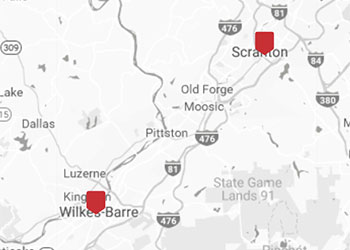Housing
The Housing section of this report examines the indicators that reflect the state of the housing market in Northeastern Pennsylvania. Addressing housing has become a significant regional priority due to limited development and considerable blight. Currently, there is a shortage of housing available at various price points. Although the rate of cost increases has slowed since the pandemic's peak, housing security remains unattainable for many residents.
Housing is a crucial social determinant of health. Individuals without stable and affordable housing often experience worse physical and mental health outcomes, and their housing situation can impact their ability to maintain consistent employment. For children, unstable housing can negatively affect academic performance. Consequently, housing has broader implications for the economy, the workforce and its pipeline, the health and social services sectors, and crime rates.
As of 2023, there were 283,079 housing units in all three counties (up from 282,766 the prior year). Housing stock in Lackawanna and Luzerne Counties is predominantly older, and about two-thirds of housing units are owner-occupied. In Wayne County, a larger share of housing was built between 1980 and 2010, and about four-fifths of homes are owner-occupied rather than renter-occupied. Wayne County also has a much higher residential vacancy rate, likely influenced by the presence of seasonally occupied homes, vacation rentals, hunting cabins, and the like.
For-sale inventory was already trending downward before the pandemic, indicating a tightening housing market (i.e., a seller’s market), and the pandemic accelerated this trend. Home values in the region saw more growth from 2019 to 2024 than in the previous decade. Accordingly, market rents have also risen, with mid-market rent increasing in the Scranton/Wilkes-Barre metro area faster than observed statewide, except for 2024.
Historically, housing has been fairly affordable in Northeastern Pennsylvania. As of the latest available data, the median monthly ownership costs (including mortgage payment, property taxes, and other costs of homeownership) as a percentage of median household income for owner-occupied households were lower than 2010 proportions in all three counties and statewide. As of 2023, rental costs as a percentage of the median household income for renters have increased in all analyzed regions except Wayne County. The same is true for homeowner costs. Compared to renters, however, homeowners tend to spend less of their monthly incomes on housing costs (29.6 percent of renter income in the three-county region compared to 15.4 percent of homeowner income in the three-county region). These trends in the real estate market suggest significant implications regarding the need for new efforts to ensure access to affordable housing. Affordable housing should not be construed as meaning low-income housing only. Many people working full-time jobs in a variety of occupations, such as education, health care, manufacturing, etc., cannot afford some of the market prices.
Finally, homelessness remains a challenge in this region, as with virtually all communities in the United States. With counts altered due to the pandemic, there are gaps in the data showing the impact of COVID-19 on homelessness in the area. Across the Commonwealth, in the eastern PA COC and Lackawanna County, more than 20.0 percent of all homeless households counted in 2024 were unsheltered, compared to just over five percent in Luzerne County. Compared to the Commonwealth’s 20.4 percent, larger shares of the region’s unhoused population consist of children (23.3 percent average). Homelessness includes individuals without permanent housing, even those staying with relatives. Data regarding homelessness is still a challenge nationally.
Although foreclosures increased in 2023 (9.8 percent on average for the three-county region), the share is still less severe than pre-COVID levels.
View Indicators Map

